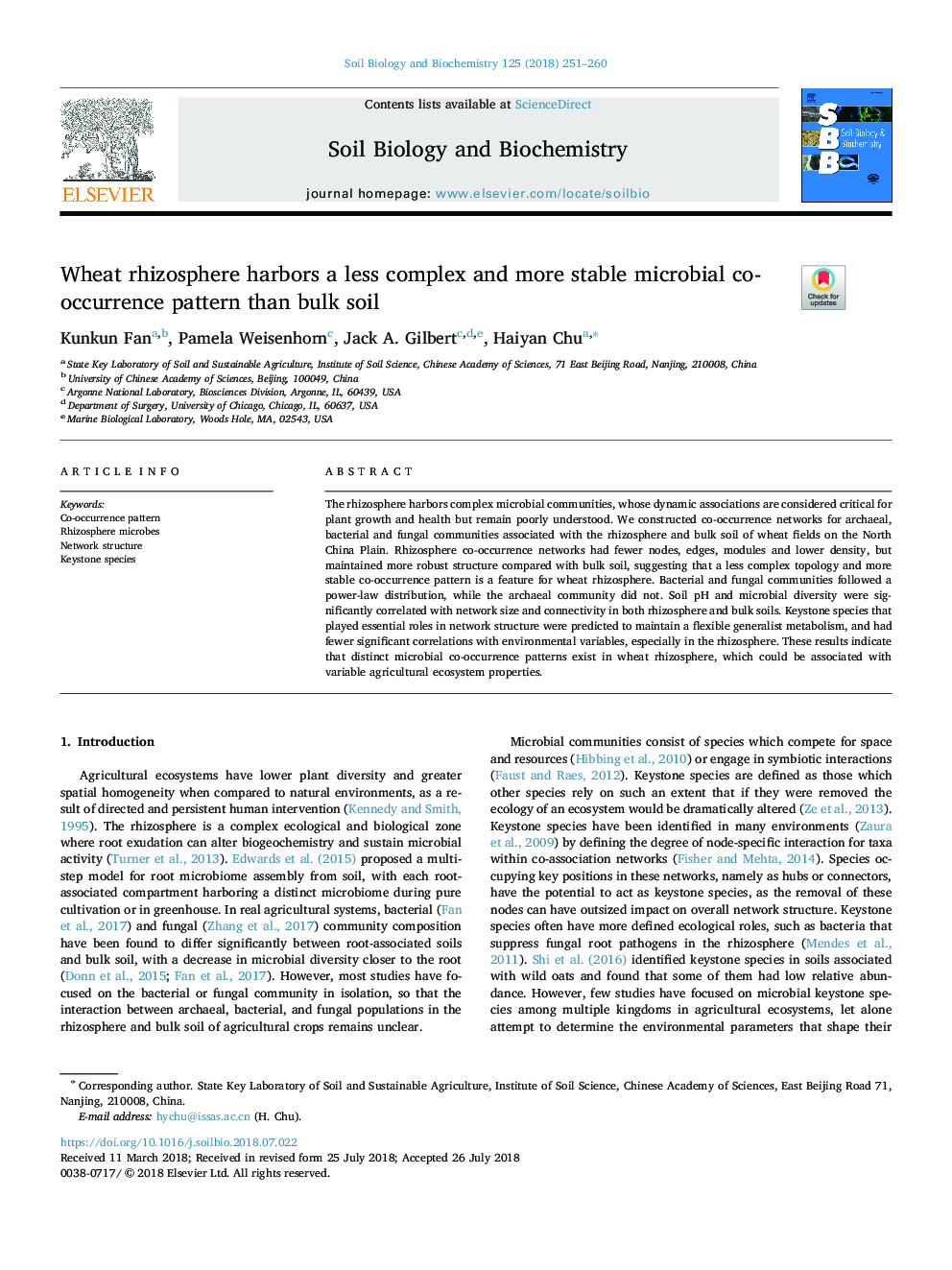| Article ID | Journal | Published Year | Pages | File Type |
|---|---|---|---|---|
| 8362484 | Soil Biology and Biochemistry | 2018 | 10 Pages |
Abstract
The rhizosphere harbors complex microbial communities, whose dynamic associations are considered critical for plant growth and health but remain poorly understood. We constructed co-occurrence networks for archaeal, bacterial and fungal communities associated with the rhizosphere and bulk soil of wheat fields on the North China Plain. Rhizosphere co-occurrence networks had fewer nodes, edges, modules and lower density, but maintained more robust structure compared with bulk soil, suggesting that a less complex topology and more stable co-occurrence pattern is a feature for wheat rhizosphere. Bacterial and fungal communities followed a power-law distribution, while the archaeal community did not. Soil pH and microbial diversity were significantly correlated with network size and connectivity in both rhizosphere and bulk soils. Keystone species that played essential roles in network structure were predicted to maintain a flexible generalist metabolism, and had fewer significant correlations with environmental variables, especially in the rhizosphere. These results indicate that distinct microbial co-occurrence patterns exist in wheat rhizosphere, which could be associated with variable agricultural ecosystem properties.
Related Topics
Life Sciences
Agricultural and Biological Sciences
Soil Science
Authors
Kunkun Fan, Pamela Weisenhorn, Jack A. Gilbert, Haiyan Chu,
